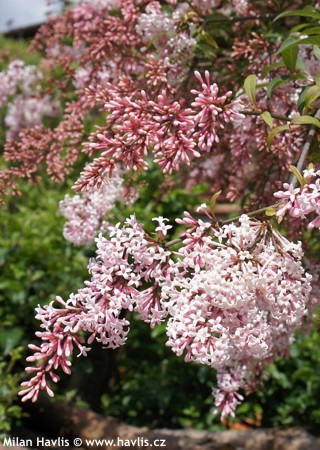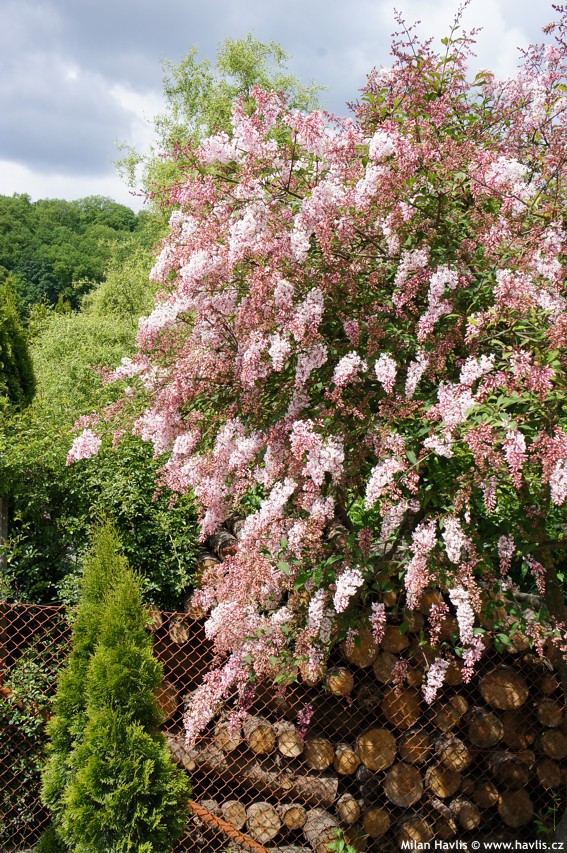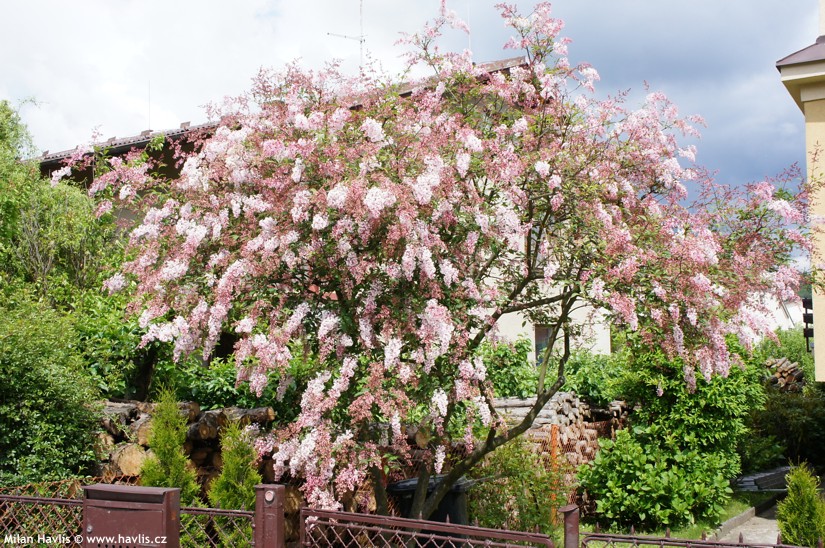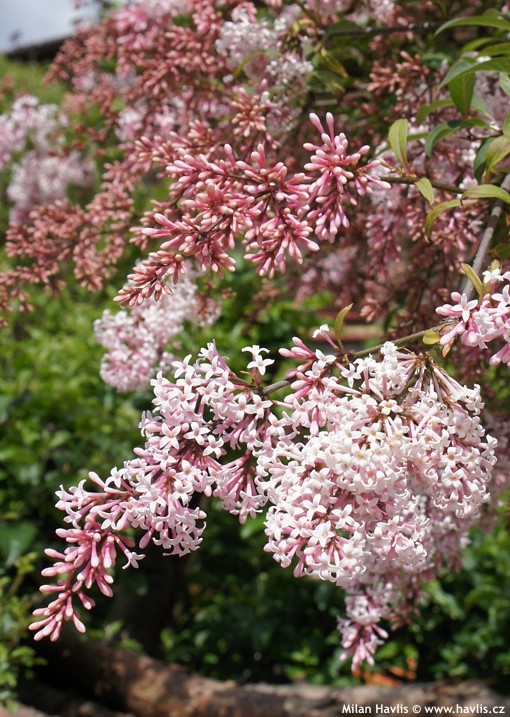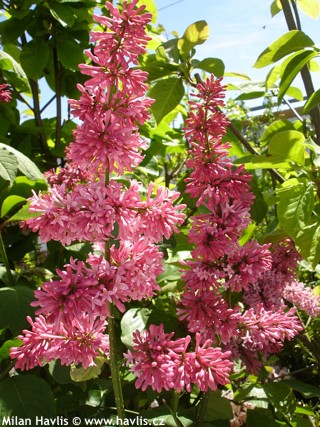Syringa 'MISS POLAND' Canadian lilac, Preston lilac
size/type
medium-sized shrub,medium-sized shrub
usual height
1-1,8m
usual width
1-1,8m
leaves
deciduous broadleaf
colour of leaves
flowers
showy
colour of flowers
blooming time
May-June
location
full to partial sun
USDA zone (lowest)
2 (down to -45°C)
winter protection
for zone 5+6

for zone 7

categorized
Description of the plant:
Canadian lilacs were first bred in 1920’s and thanks to their positives they are yet today popular for breeding mainly in countries with colder climate. This time we travel to Poland where a beautiful variety was introduced and named, surprisingly, Miss Poland. It produces almost pyramidal-shaped inflorescence composed of rich salmon-pink flower buds opening into light pink, tubular, scented flowers about two weeks later than common lilac. Lance-shaped leaves are 6-12 cm long, deciduous, deep green and partly glossy. These lilacs do not make suckers, they are not weedy unless grafted on common lilac. Growing slower than common lilac they can be used as substitutes in areas where tall shrub would be a problem. Pruning is usually not recommended but if you need to trim or re-juvenile the plant do so immediately after flowering. Deadheading will increase number of flowers for the following year.
Canadian lilacs come from several hybridizing of syringa reflexa and syringa villosa, plus other varieties. The first one was bred by Isabella Preston from Ottawa, Canada, in 1920´s and the result was a beautiful and extremely hardy shrub. Others followed later. According to the latest terminology they are now called only “syringa x” (or just “syringa”) removing “x prestoniae” followed by variety name.
Lilacs can be grown in many soil types. For best result use reasonably fertile, moist but well-drained soil, preferably neutral or alkaline. Full sun for profuse flowering. Fully hardy to -45°C (USDA zone 2).
Last update 05-02-2012
QUICK PRICE OVERVIEW
CURRENTLY SOLD OUT
WANT TO TRY A SIMILAR PLANT?












